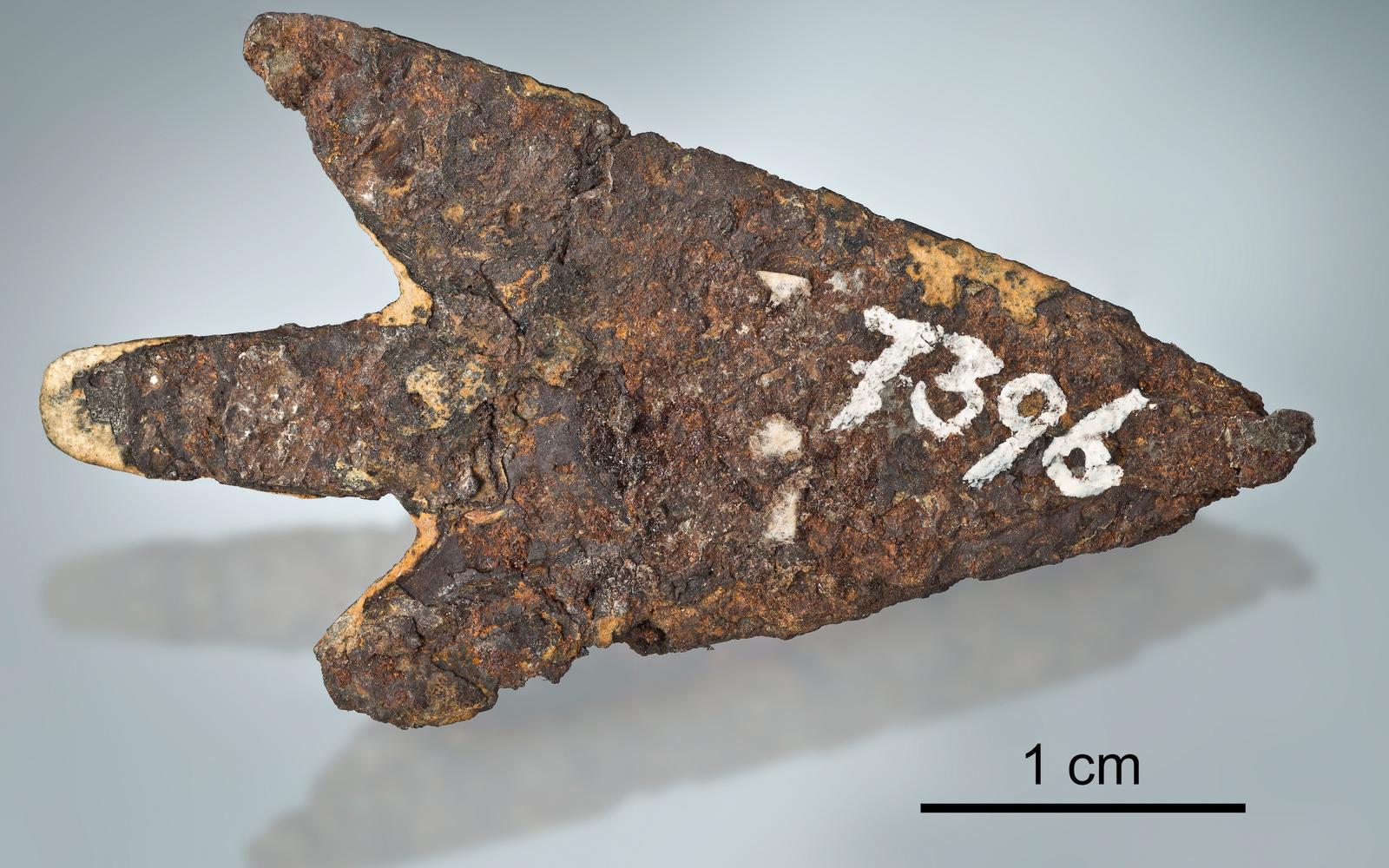Meteorite that crashed to Earth 3,500 years ago carved into arrowhead by Bronze Age hunters
A Bronze Age arrowhead found in Switzerland was made using meteoric iron.

In the late 1800s, archaeologists discovered an arrowhead at a Bronze Age dwelling in Mörigen, Switzerland. In the years since, the 3,000-year-old artifact has been part of the collection at the Bern Historical Museum.
Now, a new analysis reveals that the object is no ordinary arrowhead — it was crafted from a meteorite that crashed to Earth 3,500 years ago, according to a study published in the September issue of the Journal of Archaeological Science.
"On the outside it looks like a typical arrowhead coated in rust," lead author Beda Hofmann, head and curator of mineralogy and meteorites at the Natural History Museum of Bern, told Live Science. Their analysis showed that "there is still a lot of metal preserved," he said.
Several methods, including X-ray tomography (computerized imaging) and gamma spectrometry (a process that detects gamma-emitting radioactive materials), showed that the palm-size arrowhead not only contained aluminum-26 isotopes that don't naturally occur on Earth but also traces of iron and nickel alloy consistent with meteorites, according to the study.
Related: Boomerang meteorite may be the 1st space rock to leave Earth and return
The analysis also revealed grind marks left over from when the meteorite was shaped into an arrowhead, and the remains of tar, which was likely used to attach the point to the arrow's shaft, according to a statement.
At first, scientists thought the artifact was linked to the 170,000-year-old Twannberg meteorite site, less than 5 miles (8 kilometers) from the dwelling. However, further study revealed that the concentrations of nickel and germanium (a chemical element) in the arrowhead weren't a match, according to the statement.
Get the Space.com Newsletter
Breaking space news, the latest updates on rocket launches, skywatching events and more!
"It wasn't from the meteorite that I suspected it was from," Hofmann said of the artifact, which weighs one-tenth of an ounce (2.9 grams) and measures just over 1 inch (3 centimeters) long.
Undiscouraged, Hofmann and colleagues referenced a geological database that revealed that the Kaalijarv meteorite site in Estonia, located more than 1,400 miles (2,250 km) away, contained similar metals to the artifact and that the arrowhead came from a 2-ton (1,800 kilograms) meteorite, according to the statement.
This led scientists to conclude that the arrowhead was most likely traded at some point.
"It's been well documented that trade was well established over large distances during the Bronze Age," Hofmann said. "These early people likely knew that when the impact happened there in 1500 B.C., the material was precious and had value to it."
Even today, meteoritic arrowheads are exceedingly rare, with only 55 known objects found in Eurasia and Africa across 22 sites, according to the statement.
From Feb. 1, 2024, to April 25, 2025, the arrowhead will be on display at the Bern Historical Museum.
This article was provided by Live Science.
Join our Space Forums to keep talking space on the latest missions, night sky and more! And if you have a news tip, correction or comment, let us know at: community@space.com.

Jennifer Nalewicki is a Salt Lake City-based journalist whose work has been featured in The New York Times, Smithsonian Magazine, Scientific American, Popular Mechanics and more. She covers several science topics from planet Earth to paleontology and archaeology to health and culture. Prior to freelancing, Jennifer was a reporter at Interior Design Magazine, and before that she held an Editor role at Time Inc. Jennifer has a bachelor's degree in Journalism from The University of Texas at Austin.
-
billslugg The meteorite arrowhead was likely carved using flaked edges of quartz. At some point they may have found the arrowhead picking up tiny bits of iron. Talk about magic!Reply -
rod Ancient Egypt used meteorite iron too in tools.Reply
Extraterrestrial Elements in Egyptian Equipment, http://www.biblicalarchaeology.org/daily/news/extraterrestrial-elements-in-egyptian-equipment/?mqsc=E3540404&utm_source=WhatCountsEmail&utm_medium=BHDDailyNewsletter&utm_campaign=E3B603











